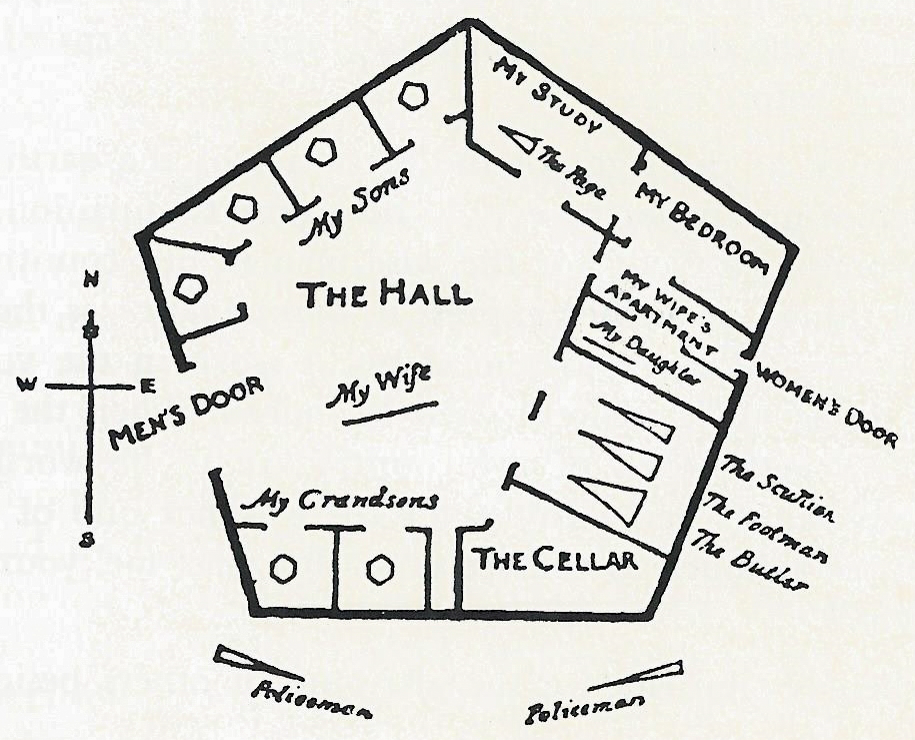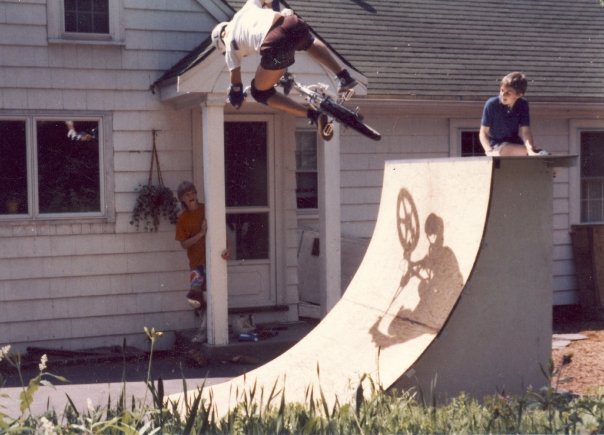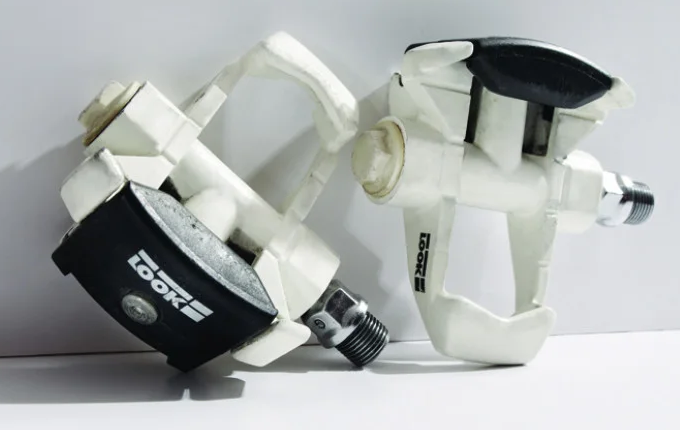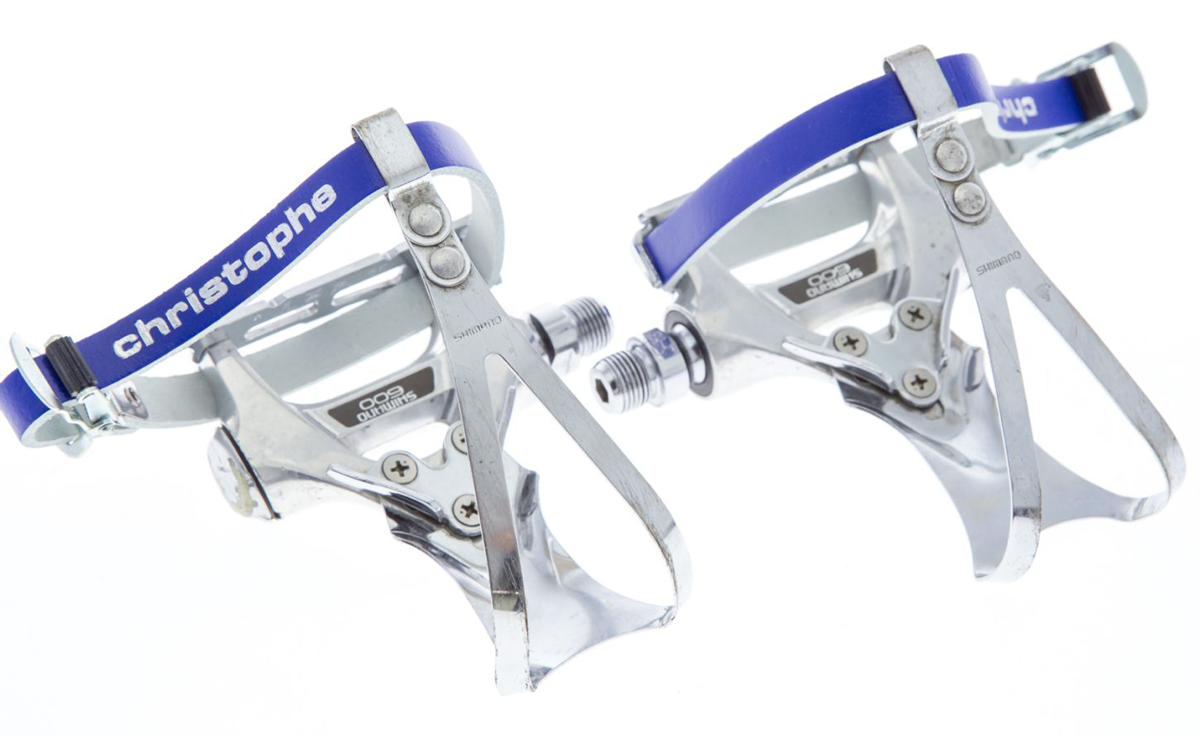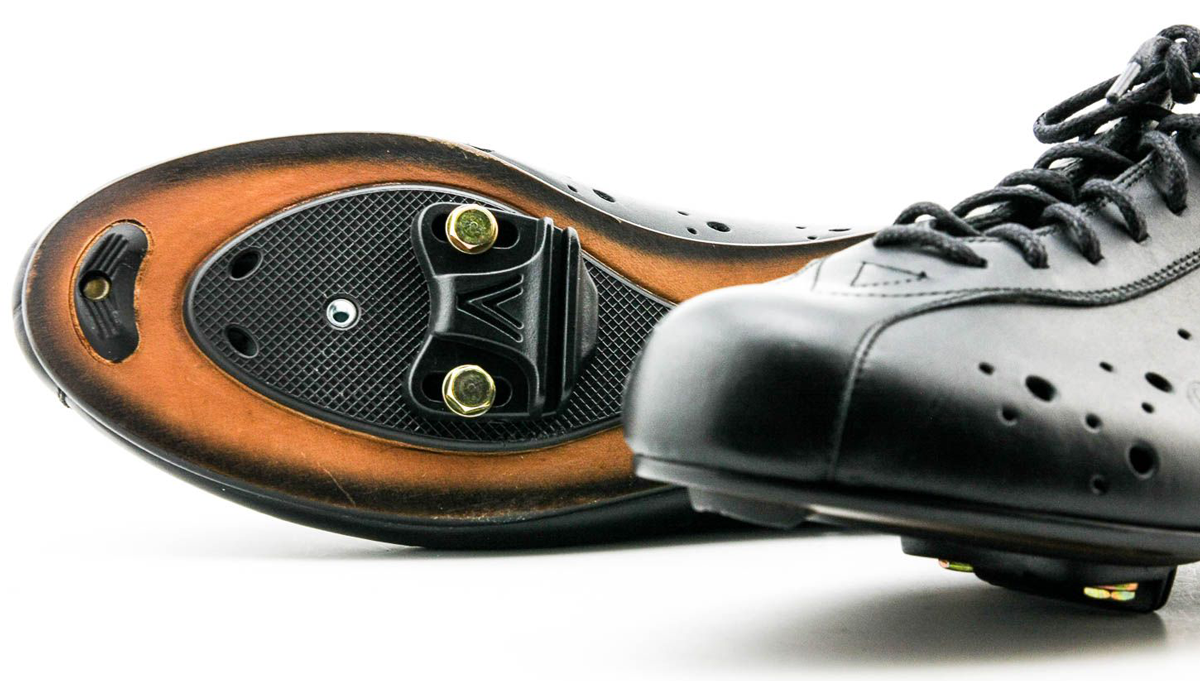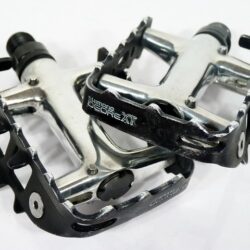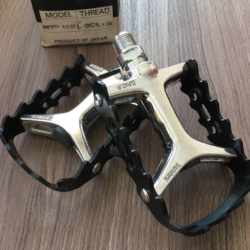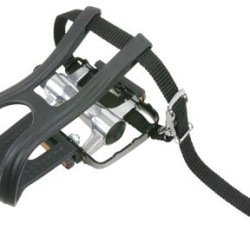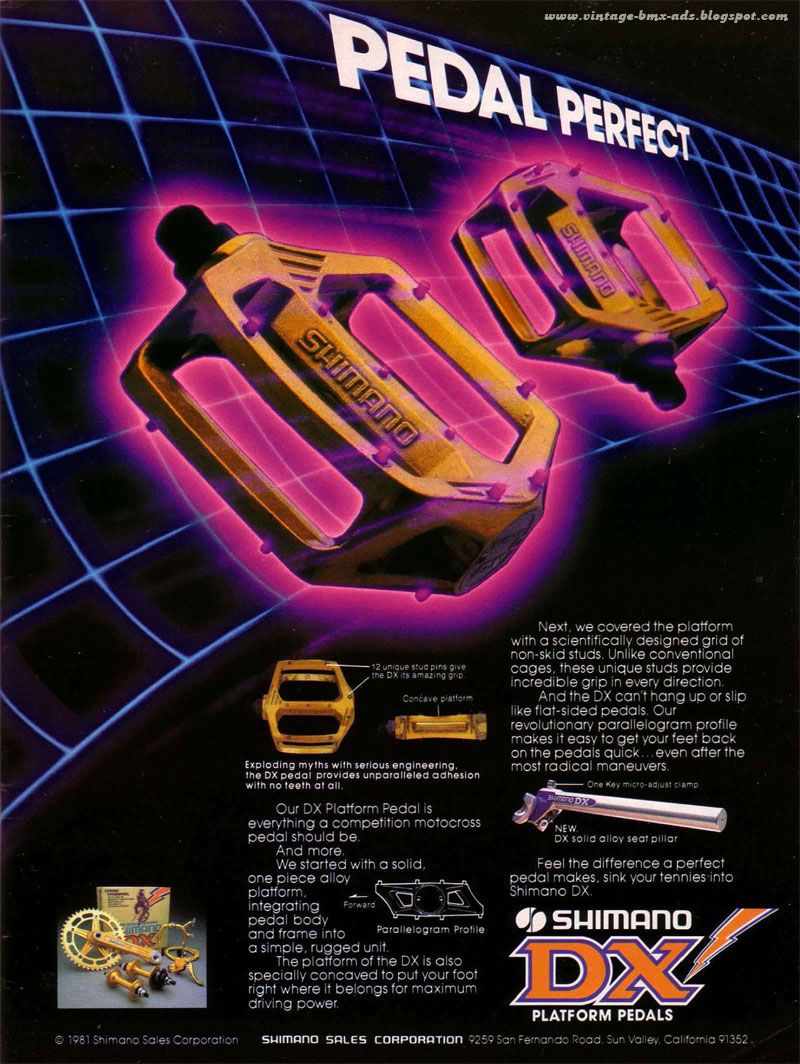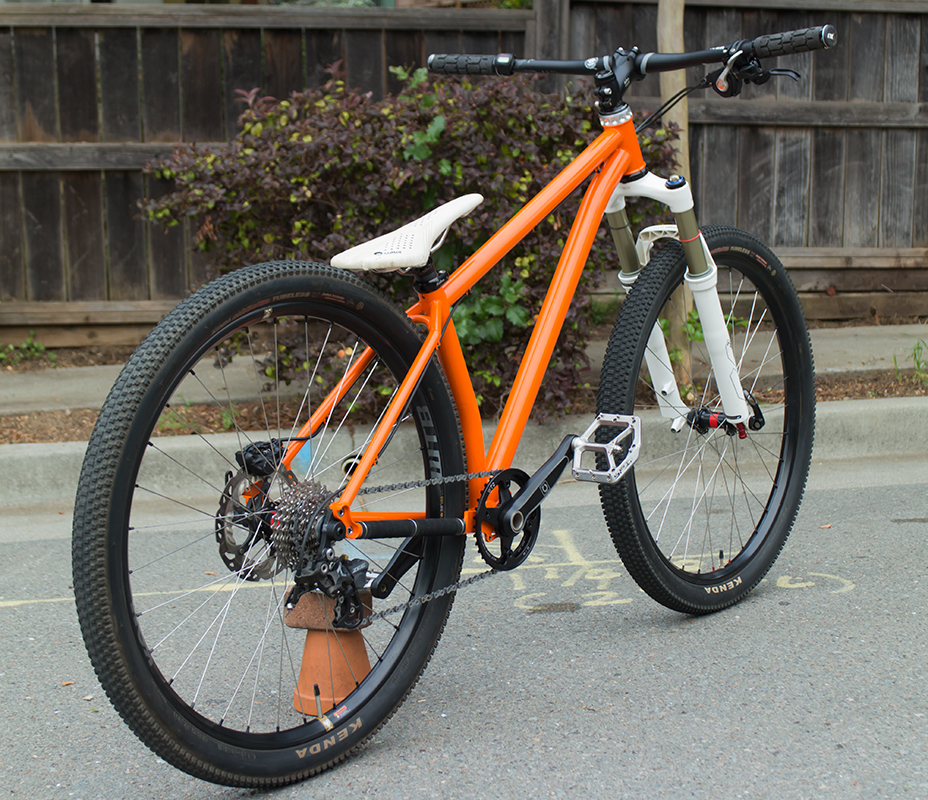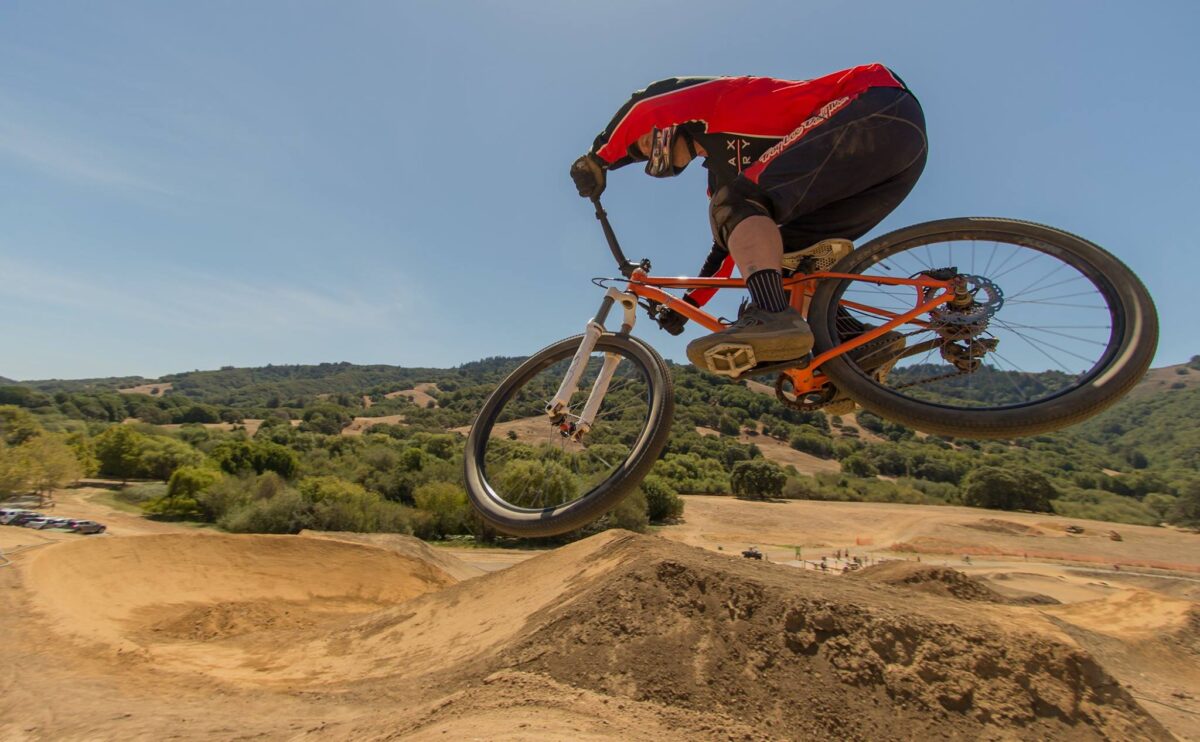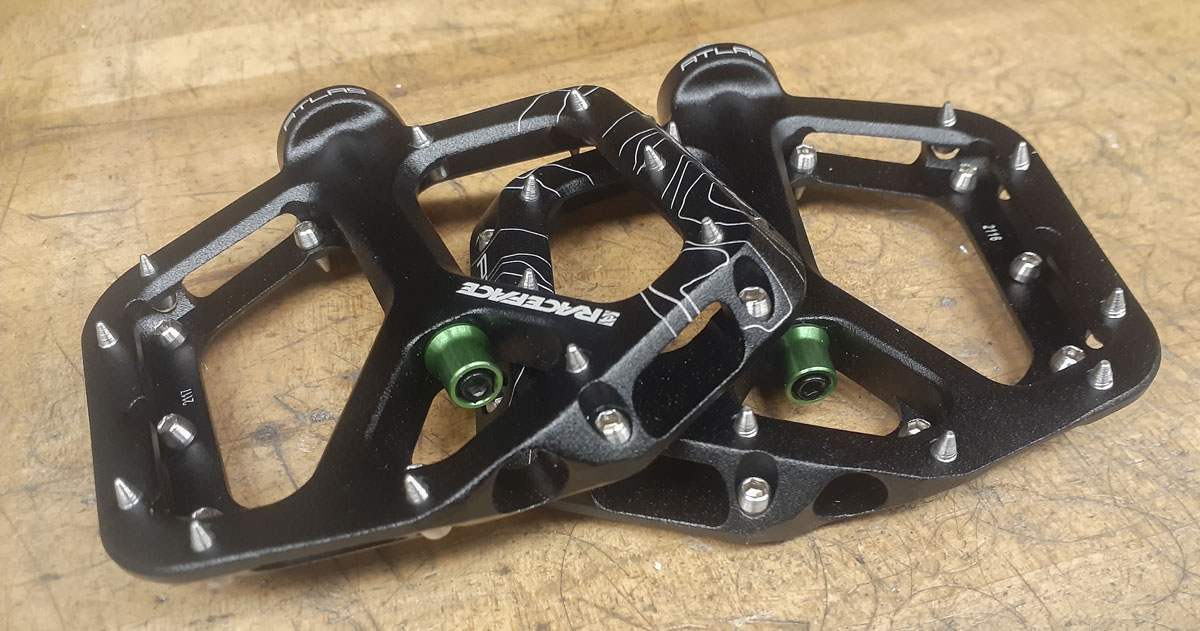Contrary to most of my posts, I’m not going to try to convince you of anything or tell you that I’m right. I just want to express some of my thoughts.
Sometime in February or March of 2022, I put platform pedals on my mountain bike. Since then, I’ve also attached them to my all-road bike. I’ve loved it. It’s been a refreshing change after 33 years in binding pedals. After the last 5 months of riding, I’m prepared to have an informed discussion about the two main systems that we use for pedals in mountain biking, the platform and the binding.
Let’s begin by getting here from there…
As a kid in the early eighties, I rode skateboards and most of my friends rode and raced BMX bikes. That was the big thing then. Even though I rode skateboards, bikes were familiar at most of the skate spots that we’d go to, Turtles, Metals, BCH, etc. During my Maximus Skatepark era, I’d work the park on ‘bike night’ when we rented the park out to just the BMX guys.
1984, Mike Mills getting air at his house in Lexington. He had stopped racing by then. This new ‘freestyle’ thing was going on. I learned to drop in on this ramp, both tail and axle. I hung around when he’d tweak his bike setup, several pedals went through rotation.
I started riding bikes in earnest in 1988 or 1989. I wasn’t riding off road just then. My other friends from skateboarding were in the city and riding bikes to parties made life far easier, especially when loaded. I was immersed in a scene made up of all kinds of characters. As we aged, there was a trend among the group I was around to find work as bicycle messengers in Boston. We were familiar with cruising around town raising hell on our skateboards so bikes were a natural progression. I got to play in the city while making pretty good money. I liked that.
Back then, everyone rode with toe cages and straps, city, “mountain”, and road. That was normal. Nobody rode with platform pedals but the BMX guys. This is an important fact that new riders today may not understand.
The Look PP65 pedal had been released just a few years (1984) before I started riding. These were the first mass market binding pedal. They were found on very high end road racing bikes but the fact that it was almost impossible to walk around in the shoes made this an unattractive option for most.
Instead, most people still used the Shimano PD-6207 (600EX) pedal or another older quill pedal design. This Shimano pedal is possibly one of the worst pedals ever made. You see, prior to the advent of binding pedals, a cleated shoe was used with a quill pedal to lock it in place. A bar on the pedal locked into a socket in the shoe cleat. There was no possibility of escape without loosening the strap. Only a hardcore racer or roadie would actually use this setup so the average person would just use a regular shoe in the pedal to ensure that they could get out in time. I tried this cleat setup a few times and it was utterly terrifying. It’s inherently unsafe and stupid to do.
What this meant for most users of quill pedals was that a raised steel bar was pushing up into the shoe and the foot. It always felt like it was trying to cut your foot in half. Long days in these pedals with soft shoes were agonizing. Early on, we didn’t know better and these were fancy parts.
As setups progressed on the streets, it was clear that there was a better setup for the city and comfort. If you were fancy and wanted the best pedal in town, you could use the Shimano PD-735 (XT) or the Sakae MTP-126 ‘Low Fat’ and a pair of nylon double eyelet toe cages. This is what the ‘mountain bikers’ were using and it was revelatory compared to the older quill systems.
In 1990 I started working at Fat City Cycles, one of the premiere bicycle frame manufactures in the US at the time. This exposed me to the highest end of what the market was producing. Most people were using the XT/SR MTB pedals at the start of the year. Later that year that the SPD M737 pedal was released. This was exciting and things were changing! I wanted a set so badly. Within the year, I was able to buy a used set from one of our racers. That’s when I started using binding pedals, exclusively for mountain biking. It was revolutionary! That continued for the last 33 years.
Time has proven this design to be one of the greatest work of engineering in the bicycle world. Imagine, upon first release to now, over 33 years, almost no real changes to the functional design of this pedal has been needed. They did it first, they did it right, we haven’t been able to improve it. That’s unimaginable for most designers and engineers. This is the miracle pedal.
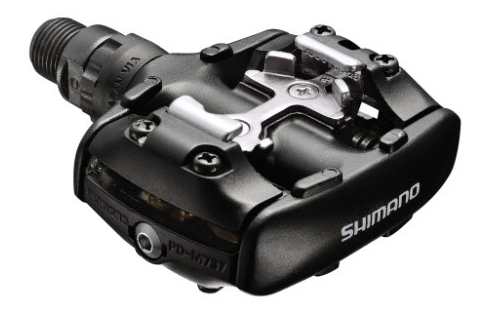
It might be a bit of an exaggeration and misleading for you to be led to think that I only used binding pedals after 1990. I would use BMX pedals on my urban BMX cruiser bike and cage pedals on my commuting bike. I would use flat pedals for safety when dirt jumping, obviously. There were places for this. Just not for riding trail. Any off road riding was done with the binding pedals. Anything else was just a joke. I was certainly most skilled when I was using the SPD pedal.
Then there was another change.
In the early 2010s, riding mountain bike with platform pedals became more popular than it ever had. Platform pedals of all types have been produced in the past but most any good performance design will refer back to the 1981 release of the Shimano PD-MX10 ‘DX’ pedal. These were another legend in pedal design from Shimano. Their parallelogram design, scooped platform, and good bearings were unmatched for decades.
Yes, the 1983 Hutch ‘Beartrap’ pedals made an impression on many but they were actually a terrible pedal. I’ve owned and used the Crupi version. They are garbage. Too often the riders foot will go down to the pedal and lock in 90 degrees out of phase. It happens more than you think. Hard no.
When the Tamarancho flow trail (Endor) and chainless race came onto the scene, I would practice for racing the trail with flat pedals and race with cleats. I thought that this would be some help in getting my body to move better for the crazy race. This was my first real use of platform pedals on trail.
The PVD Z-74 Flowmaster MkII, circa 2015. Flat pedals and no front brake.
Dirt jumping at Stafford Bike Park, Novato, at the young age of 45.
What really changed my trail use of platform pedals was my development of the Klunker platform. This started with the 2017 PVD Fokker Dr.1. Currently, this has culminated with the 2020 PVD Supermarine Spitfire (which may see another update soon).
I was finally actually using platform pedals on real singletrack trail. It wasn’t easy. Over 30 years of programming had me interacting with the pedals entirely wrong. Of course, I use these with quality 510 shoes that provide as good grip as possible. I also use long sharpened pins for improving grip with low contact pressure.
Something was quite different though, and COVID was about to begin.
During COVID, my perspective on riding has changed quite a bit. I was still a bloodthirsty killer going down the hill but otherwise, I was happy to take my time getting around and stop for a while in the middle of nowhere. There was no rush. I was old. Whatever. I want to take my time and appreciate the day.
Among the several people that I regularly ride with, I’m in a minority in my use (until recently) of binding pedals. My wife has always ridden mountain bike with platform pedals, she feels best being able to get safe footing rapidly. Ronen tried to get onto binding pedals but couldn’t make it stick, he felt locked in during crashes. Really, my latest thing has been a turn to the dark side.
I’m just back from a road trip where I was able to do 3 liftserve days at Northstar (1x) and Trestle (2x). I switched to SPD pedals for these days as I wanted to be in the safest and highest performing situation possible for these environments. I’m not a fool and will do what it takes when I’m on the line.
My perspective, as you can guess, is that of someone who has been riding ‘aggressively’ since the age of 19 (1989) to 52 (2022), 34 years. So while I am writing this as an old and fat 52 year old, I do understand what it means to be a cocky young buck that’s out for blood. I ride downhill and challenging trail comfortably with binding pedals. This is important within my evaluation. Games of speed and strength are just as much part of riding as getting places and having a picnic. There’s a lot of considerations that we need to make and those surround pedals.
So here we are, what do I think of the two differing systems? Clearly, that’s a complex topic and we all have different paths to this point.
- Binding pedals are absolutely superior for going fast. There’s just no question, if you want to go fast, binding pedals are the obvious choice. It’s a direct connection. There’s no guessing. You pedal and you move. You are glued to the bike.
- Platform pedals are awesome whenever you aren’t on your bike. Pushing a bike up a hill, going grocery shopping, being a tourist, chilling at a scenic vista. It’s so nice to walk around with comfort and smooth gait. This is the big sell.
- In technically dangerous terrain, it is often easier for a rider to use flat pedals due to the ease of releasing from the bike to get a secure foot planted on the ground.
- In very rough terrain, especially on hardtail and rigid bikes, binding pedals keep your feet in place. This is a huge advantage as maximum attention can be put on navigation rather than keeping feet in place. They will also help quite a bit with full suspension bikes but many find that that isn’t essential.
- Novice riders (in the modern era) are very intimidated by binding pedals and naturally gravitate toward platform pedals.
- When riding on platform pedals, it can be easier to think about getting off the bike for whatever reason while binding pedals guide the rider toward continuing to pedal. This is psychological stuff that I’ve noticed. Sightseeing, partying, socializing, etc are all benefited on platform pedals.
- Only a fool attempts to learn to ride wheelies or dirt jump with binding pedals. This is extremely dangerous and can cause severe injury. With dirt jumping, it is difficult to get clear of the bike while airborne with bindings. Regarding wheelies, the common fail is falling down backwards but in that case, we’d have to rotate heals forward of the bike to get out. This simply can’t be done, leading to horrible impact to the hip and tail of the body.
- Footwear for binding pedals need to be quite snug to work well, even tight, to maximize value. In contrast, on flat pedals, a much looser fit of the shoe is entirely acceptable.
- In cold dry conditions, platform pedals may make sense as thick wool socks have room to work.
- Footwear for binding pedals can be much lighter than for platform pedals, especially in very wet conditions.
- Footwear for binding pedals can be made extremely stiff giving the rider an incredible surface to push against. The platform footware is far more flexible but the pedal does provide some good support.
- In certain cases, severe laceration to the lower leg are produced by the pedal pins when a rider slips from a platform pedal. While a binding pedal may impact chins, it rarely results in deep laceration.
- Learning to ride with and lifting the bike with platform pedals allows the rider to truly learn how to move over the bike and get it in the air. This does not work in reverse. I am far less skilled with platform pedals. I can ride almost anything with binding pedals.
- When j-hopping the bike on trail, considerably height and control can be added using binding pedals.
- Generally flat pedals have a lower stack height compared to binding pedals. This will slightly lower the saddle.
- Binding pedals are far narrower than platform pedals. In high rocks or narrow chutes, the platform pedals will strike or snag far more often than the binding pedals.
- Mud can make a platform pedal slipperier. It can also jam a binding pedal. Both designs can also work just fine in these conditions.
- Both pedals, when quality, will weigh approximately the same.
- Almost any shoe can be used with platform pedals. This can make it easier to get on the bike for newer riders. Special shoes are needed for binding pedals.
- Showing up to a bar with cleated shoes make you look like a clown (ala men). Better to show up with human shoes by riding with flat pedals if this is your thing.
- There is a way of cornering the bike that I’ve been working on for the past few years that moves the foot off the pedal during apex for either insurance or tripoding. Flat pedals make getting off and back on far easier. I’ve been able to improve getting back into the binding pedals using this method but being on the flat pedals helped me bridge my technique.
There are bad pedals, good pedals, and great pedals. Here are some of the better choices:
- Any dual sided Shimano SPD pedal is excellent, regardless of price point. The XTR models will have a slightly lower stack height.
- 2014-2021 Race Face Atlas pedal. These are the bearing rather than the new bushing version. A bearing on the outer side is better for pedaling while a bushing is acceptable for downhill.
- 2022+ Race Face Atlas pedal for DH
- Better quality pedals are most often attached with an 8mm hex wrench while a lower quality pedal will use a 6mm hex wrench or 15mm open end wrench.
Interesting fact, there is no evidence that a bicycle rider actually imparts power during the back side of the pedal stroke while pedaling with binding pedals. You do not actually ‘pull up’. Rather, it is just far easier to track the pedal during high cadence on the back side of the stroke so that you will be properly positioned for the power stroke regardless of how much else is going on in the situation.

